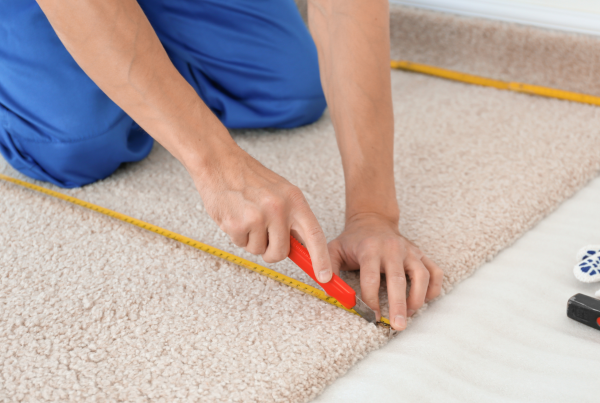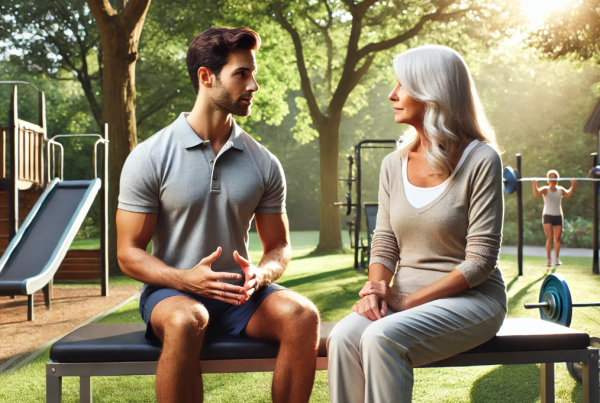The increasing incidence of aches and pains is something we reluctantly accept as we age… It’s not uncommon to hear comments along the lines of “my back just isn’t what it used to be,” or, “my … (insert body part) hurts, I must be getting old!” In fact, you may even be saying them yourself!
What if we told you that age isn’t the only thing contributing to these aches and pains? Better yet, what if we told you there was something you could do about it?
In many cases, ‘getting old’ is likely not the main offender. The real villain we are speaking of is one that many of us spend time with, everyday, and often for hours on end. Drumroll please… Bad posture.
What constitutes good or bad posture?
From a (very simplified) anatomical point of view, good posture involves having an aligned skeleton, with well-balanced muscles surrounding it. When we say ‘well-balanced muscles’, we are talking about the ‘pull’ or ‘tension’ that the muscles exert on the joint – it should be of appropriate force on either side of the joint to hold the bones in alignment. So where does it all go wrong?
As we go throughout our day-to-day life, we are often using certain muscle groups more than others. The muscles we use grow stronger (and often tighter), while the muscles we don’t use become weaker. An example of this is someone who works at a desk everyday. The posture at the desk is often of flexed hips (from sitting), a rounded back, and forward head and shoulders. A lot of time spent here makes the muscles of the chest, shoulders and hip flexors tighter and the muscles of the back and glutes weak.
This overtime leads changes in the balance between the muscle groups – with the tight/strong muscles pulling from one side of various joints, and the weaker muscle groups unable to resist – causing that “ideal” skeleton to shift out of alignment.
Posture in the workplace
It’s important to note that computer work is just one example. Poor postures can cause havoc in any job where the work is of repetitive nature, as the body adapts based on the repetition of movements. This process can be amplified by injuries that lead to compensation, or additional postural habits like leaning to one side when we’re standing.
It’s a simple concept, yes. But one that gets more complex the longer we ignore it… Changes in skeletal alignment can impact on blood flow and nerve health, promote pain, restrict the joints range of motion, increase the risk of injury, and lead to the development of osteoarthritis.
Exercise to the rescue!
Usually with exercise, especially in the return to work space, we live by the principle of specificity. This principle dictates that whatever job our client does, we need to prescribe exercises that mimic that role.
Designing exercise programs for postural purposes is the exact opposite to that… If a client’s job, sport or day to day life is continually reinforcing poor postures, we look at introducing movement that is the opposite of what they are doing repetitively. For that desk worker, we would look at stretching the chest and strengthening the back muscles. Any role which requires extended sitting (truck drivers, accountants, lawyers… The list goes on) may include stretching the hip flexors, and strengthening the glutes. A painter who is doing a lot of overhead work may benefit from stretching their shoulders.
Longer and Stronger
Loosening and lengthening the tight muscles (via stretching), and strengthening the weak muscles helps to reduce any muscle imbalances occurring across the joints. By doing this, we can reverse the effects described above and “pull” the skeleton back into a more balanced or centred position. And just like the repetition that leads to poor postures developing in the first place, repetition in correcting these same muscles is necessary!
“To say that correct posture is a prerequisite of a healthy life, is not an exaggeration” (1)
Variety is the spice of life, and your skeleton agrees. Age is but a number, and exercise is your friend when it comes to poor posture and combating the aches and pains that come with it!
References:
- Kim, D., Cho, M., Park, Y., & Yang, Y. (2015). Effect of an exercise program for posture correction on musculoskeletal pain. Journal of Physical Therapy Science, 27(6), 1791–1794.
Author: Tessa Nielsen Editor: Yolanda van Vugt Clinical Exercise Physiologist and Content Creator at Specialised
#exercisephysiology #exerciserehab #rehabilitation #lifeinsurance #incomeprotection #ctp #workcover #mobile #mobileexercisephysiology #fatigue #mentalhealth #cancer #musculoskeletal #injury #pain #physio #physiotherapy #Sydney #Brisbane #Melbourne #Adelaide #Auckland #Waikato #BayofPlenty #Wellington #Otago #Christchurch



